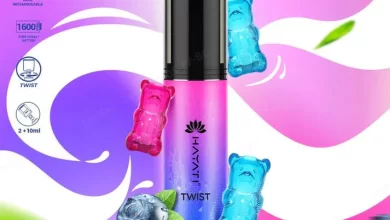Revolutionizing Water Treatment with Electrodeionization Systems
Revolutionizing Water Treatment with Electrodeionization Systems
Ion exchange membranes, resin, and electricity are the three components of electrodeionization (EDI), an electrically powered water treatment method that eliminates ionized species from water. Ions and other charged species, such as salts and organic acids, are eliminated from water via EDI.
How is electroionization carried out? How EDI functions
The EDI module is made up of a series of chambers divided by ion-exchange membranes and packed with ion-exchange resins. After water enters the module, ions are forced to pass through the resins and over the membranes by an applied electrical field that is at an angle to the flow. Instead of being anchored to the medium indefinitely, these impurity ions are gathered into concentrate streams that may be recycled or emptied into the drain. You may use the deionized product water straight away or treat it further to get even purer water.
In essence, the EDI module functions as an electrically regenerating ion exchange bed. The ions are exchanged for H+ and OH- ions when they pass through the resins and in between the cation or anion selective membranes. The externally provided electric field causes ions that attach to the ion exchange resins to ultimately move to a different chamber, where they create the H+ and OH- ions required to keep the resins in their regenerated condition. Ions are flushed to waste in a separate chamber.
When compared to traditional ion exchange, EDI has different restrictions. In the latter case, the total amount of ions absorbed by the resins effectively sets a limit on the product water ionic purity. The maximum rate of ion arrival sets a limit on EDI. An ionic load that is too high may likely overload the module. Because of this, EDI is frequently used to remove carbon dioxide following reverse osmosis and, in the case of very hard water, together with degassing.
Advantages
In contrast to ion exchange beds that are operated in batch mode, the ion exchange beds in the EDI systems renew constantly, preventing exhaustion. The contaminants do not accumulate and deplete the resin since they are eliminated by the concentrates. It may take several years for an EDI unit to need to be replaced. With this method, a product water resistivity of >15 MΩ.cm is often consistently attained. One substitute for single-use purification cartridges is this technology. Compared to single-bed ion-exchange systems, which could release weakly bound ions when the medium exhausts, EDI can provide more constant purity in addition to the obvious benefits and decreased downtime of not having to change cartridges. Compared to an ion-exchange bed, an EDI module’s lower resin contents further lessen the discharge of organic contaminants.
With Hinada’s power, ionized and ionizable species are continuously removed from feedwater through a chemical-free process called electrodeionization (EDI). Typically used to polish reverse osmosis (RO) permeate, EDI is a wise substitute for traditional mixed bed ion exchange (IX) and works rather well in its stead. It is no longer necessary to handle or store the dangerous chemicals required for resin regeneration in mixed beds when electrodeionization is employed. Furthermore, there is no hazardous waste stream created by this permeate polishing technique because electricity is EDI’s sole consumable. Our patented and tested EDI modules can create high-purity water with a high contamination rejection rate, improve performance, and sustain continuous product quality.
Utilizing functional currents, electrodeionization removes ionized materials from water bodies while promoting the growth of the ion exchange medium. Reverse osmosis or even multiple pass RO systems are typically used before applying an EDI water system. EDI water treatment contributes to ensuring optimal system performance throughout. An very pure solution that satisfies all of your needs is the end result.
With 1-pass RO, many EDI water systems that use Hinada’s EDI technology for water purification function incredibly well. Achieving 17+ Megaohm with a single pass RO is simple. Using a 1-pass RO, the majority of USP WFI and filtered water systems can readily fulfill criteria. The softening process using a 1-pass RO system is less costly and difficult than a 2-pass RO system, according to industry information.
Meeting the feed specifications for the EDI water treatment facilities is challenging in the absence of a membrane degasser and/or pH correction. Lowering the CO2 before the electrodeionization system will enhance the quality of the final product and reduce the load (lower amps). Hinada reduced and removed CO2 from several EDI skids by installing membrane degassers. The suggested forced air degasser (tower) design was substituted with a membrane degasser. It was smaller, less expensive, and required less time to install.
The CO2 content in input water may be eliminated via EDI water treatment, in contrast to RO systems. This is significant because carbon dioxide content cannot be determined by conductivity measurement since it seems to be ionized in water. Furthermore, there is a substantial reliance on the EDI water system to remove carbon dioxide because RO systems are unable to do it.


